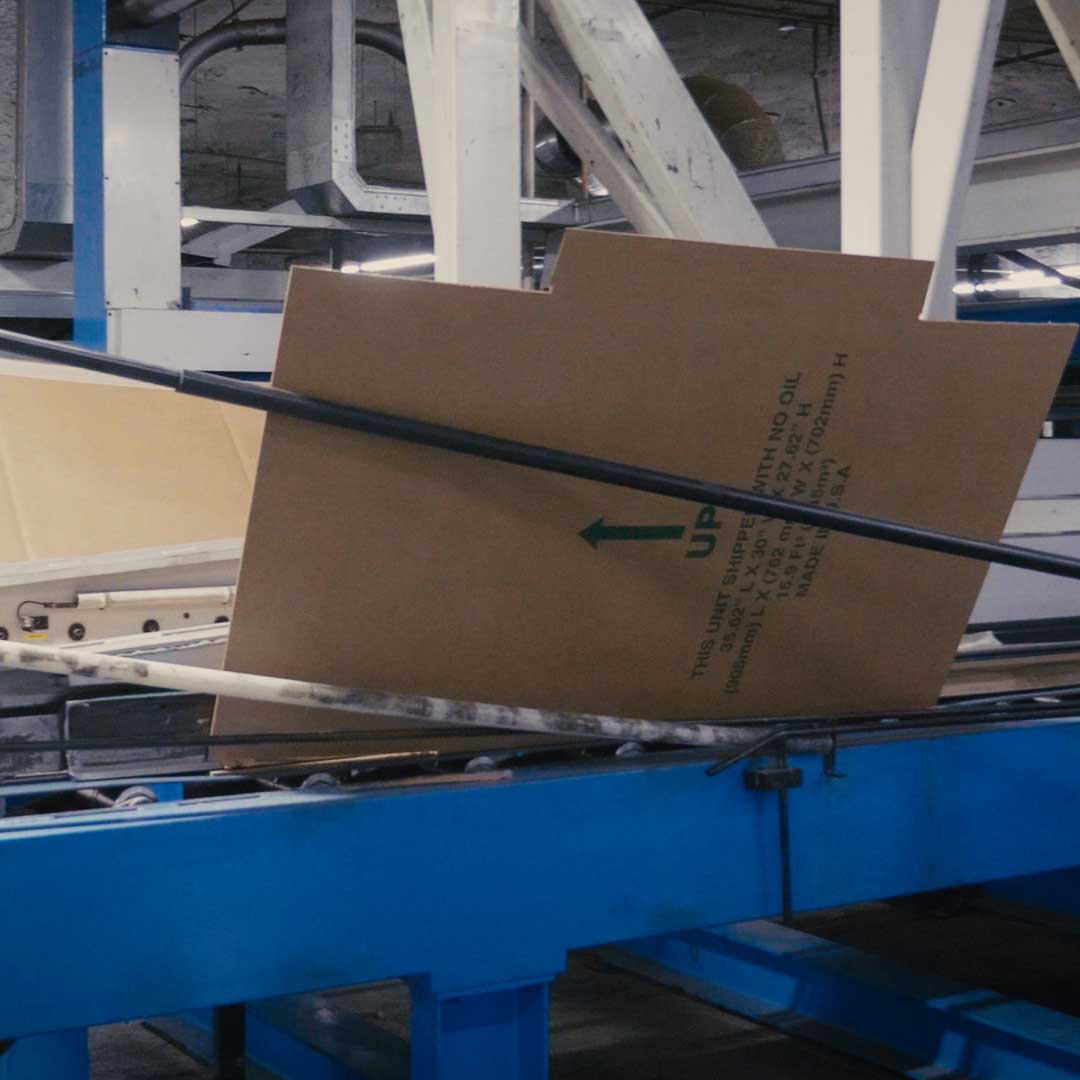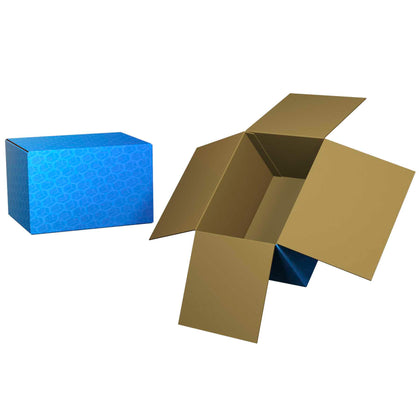

Flexographic (flexo) printing, which was invented almost 130 years ago, is still a popular printing method because it is cost-effective, efficient, and adaptable.
While we recognize the importance of printing in packaging design, determining which printing technique is appropriate for your custom packaging project may be challenging.
In the packaging industry, we hear so much about offset printing and digital printing that newcomers frequently feel these are their only options.
Flexography printing is another excellent printing option to explore, albeit it is less well-known. Flexography provides a variety of high-quality printing and finishing choices.
Let's take a closer look at the Flexography process so you can make informed judgments about your packaging project!
Table Of Contents
Flexography Production Printing Process
Flexography is a commercial printing method that uses a flexible printing plate to create high-quality prints on various materials such as folding cartons, corrugated cardboard, plastic, and metallic films.
It is regarded as the modern-day letterpress and, like offset printing, can endure massive volumes of packaging items.
Flexography is a method of printing on non-porous surfaces that is often used to print on the surface of various forms of food packaging. Food packaging must be non-porous in order to keep items fresh and uncontaminated, which is why flexography printing is typically the best option. But High-Speed Digital Printing is also safe for food packaging!
Image preparation, plate-making, mounting, printing, and finishing are the main steps in flexography.
The photochemical approach, the laser method, and the photomechanical method are all ways to create flexographic plate-making.
Color Range
Color specification isn't required in digital printing, this is due to the fact that these printers already have a set of inks. Which are usually cyan, magenta, yellow, and black (also known as CMYK). Each color is printed as a series of small dots that, when combined, generate the required hues in the page.
So, why isn't flexo printing capable of doing the same? It is technically possible. The lowest dot size that a flexo plate can produce, on the other hand, is greater than those used in digital printing. When looked closely, the individual dots will become visible, and the images will seem pixelated. There's also the issue of color matching, which is especially important when printing on kraft paper.
While CMYK may approximate a wide range of colors, it seldom matches the colors you see on your computer screen accurately. When printed, colors may seem subdued or have a different tone. This makes it difficult to maintain critical colors constant across applications, such as brand colors.
Complex Process
Flexography may be done on a variety of printing machines, and the type used is typically determined by what has to be printed.
Flexographic inks have a low viscosity, and they lay on the surface of substrates until they harden as part of the process. Folding, cutting, binding, and coating are common processes in the finishing process.
While this may appear to be straightforward, Flexography is more complicated due to the several types of flexographic printing possibilities available. So you need the right team to be working on your project to ensure success.
Costs
Because flexo requires different print plates for each color, CMYK graphics would necessitate the purchase of at least four distinct print plates. If your box just has one or two apparent colors, this is a significant pricing difference. That's why, with the exception of printing color pictures, specifying ink colors in flexography is usually less expensive and more dependable.
Available Colors
GCMI and Pantone (PMS) colors are the two primary ink color schemes used in flexography for packaging.
GCMI Colors
The FLEXO Color Guide was produced by the Glass Container Manufacturers Institute (GCMI) in 1949. The inks were numbered for easy identification and displayed on both white and kraft paper in this guide.
The process has been changed several times since then as new inks have been introduced or tweaked, but the basic premise has remained the same. The guide makes it simple for producers to explain ink alternatives to customers, assuring consistent outcomes.
There are 42 colors to pick from in the most recent GCMI guide, edition x. Manufacturers of corrugated packaging use GCMI colors as a standard. Your manufacturer should be able to give you color samples of the many possibilities on either white or kraft paper, allowing you to choose the ones that best suit your needs.
There are a number of locations on the internet where you may see color previews. While they might be useful for getting a sense of what's available, they shouldn't be used in place of real swatches when making a final color choice.
Pantone Colors
Are you having trouble finding a GCMI color that suits your vision? Most Packaging manufacturers also let you choose Pantone colors. There are many alternatives available, but the ones you'll need for corrugated packaging are classified into coated and uncoated colors. Uncoated inks will be used on uncoated substrates (such as kraft or mottled white), whereas coated substrates (such as Kemi) will employ coated colors.
Pantone colors that have been coated have a 'C' at the end of their code, whereas uncoated colors have a 'U' (e.g. 102 C or 102 U). Check with your manufacturer to see if your project calls for coated or uncoated colors, since the identical Pantone number will look differently on coated and uncoated paper.
Pantone colors do not have swatches printed on kraft, which is a disadvantage as compared to GCMI colors. As a result, the colors you choose may look warmer, darker, or subdued than you thought.
Printing white ink below the desired color is one way to create a more perfect match. However, this necessitates the purchase of a new print plate, and the results will still be imperfect. Some Pantone colors are also more expensive, and your manufacturer may not stock them.
Advantages
Easily Print High Volume
The technique can print millions of impressions per minute and can support a wide range of cylinder repeat lengths to meet customer requirements. The printing plates can last a very long time before needing to be replaced.
Low Cost At High Volume
When you have large orders, especially with simple artwork and designs, Flexo can help you find a lot of savings. The more you order, the more you save.
Large Selection Of Inks
Flexo can print with water-based inks, UV curable inks, and solvent inks, all of which dry extremely quickly, making it both environmentally friendly and time-saving.
Disadvantages
Only Allows For Simpler Artwork
Flexography printing is unable to produce the precise artwork that offset printing and other techniques of printing are capable of.
Upfront Tooling Costs
When you use Flexography, you need to pay for printing plates to be created. That can be anywhere from a few hundred dollars, to a few thousand. Not to mention you must wait sometimes two months for them to be created.
No Way To Have Short-Runs
This type of printing is the enemy of short-runs. The setup time and costs associated with it, means it wouldn't make any sense to only run a small amount. That is typically reserved for High-Speed Digital Printing.
Artwork Restrictions
Since its inception in 1890, flexography has seen several advances. As previously said, flexography has given us a vast range of capabilities.
When picking flexography as your preferred printing process, however, various design concerns must be kept in mind.
The quality of your end product's printing may be influenced by your design and file preparation. While this is true for all printing methods, it's critical to remember these details while designing.
The clarity of your print, for example, is influenced by the font size. When designing your package, you must consider the materials that will be used.
Create Custom Packaging With Flexography Today!
Flexography has been around for over a century, and in that time it's seen many advancements. But with these advances come new design considerations. You'll want to be sure your artwork is clear so the final product doesn't suffer when printed on food packaging.
If you're looking to create custom packages using flexography printing, we can help! We offer high-quality service at competitive rates.
Contact us today if you need any help developing or implementing a packaging plan.





